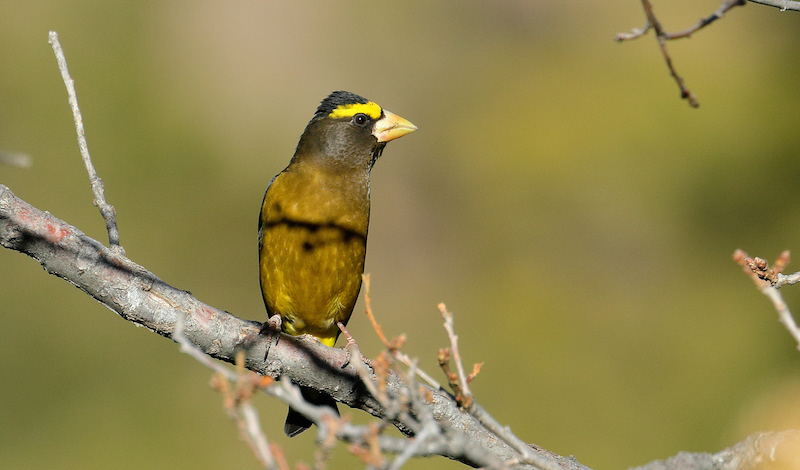By Bob Walker
Evening Grosbeaks (Coccothraustes vespertinus) are large finches that visit Los Alamos unpredictably. Whenever a species of bird appears in an area where they are not normally found, and in large numbers, it is called an irruption. We had such an event in Los Alamos in the spring of 2015, but have not seen nearly as many Evening Grosbeaks since. We have had a few visiting the nature center and other places in the Los Alamos townsite this fall and early winter (2017). Irruptive birds tend to travel in large flocks as they wander in search of plentiful food supplies.
The adult male Evening Grosbeak (pictured above) is characterized by his warm brown chest, brown head, black wings with a prominent white patch, and bright yellow feathers on their forehead and back. The females are drabber, sporting an overall grayish body, black and white wings, with a touch of yellow near the neck. Of course, all Evening Grosbeaks have the enormous bill, which they use to crack seeds.
Evening Grosbeaks are normally found in forested parts of the western US and have been seen at the nature center’s seed feeders. The photograph below shows a small flock of them (along with a couple of Pine Siskins and a Cassin’s Finch, two other irruptive species of birds), feeding on the ground near the pond in March 2015.

When flocks of Evening Grosbeaks are feeding in your area, you will recognize their constant calls, as in the sound sample below:
Find more detailed articles about the Evening Grosbeak on these web pages: PEEC’s bird nature guide, identify.whatbird.com, and allaboutbirds.org, and you can enjoy more beautiful photos of Evening Grosbeaks at the Robert Royse and Linda Goff web sites, or by performing an image search on the Google or Flickr web sites.

